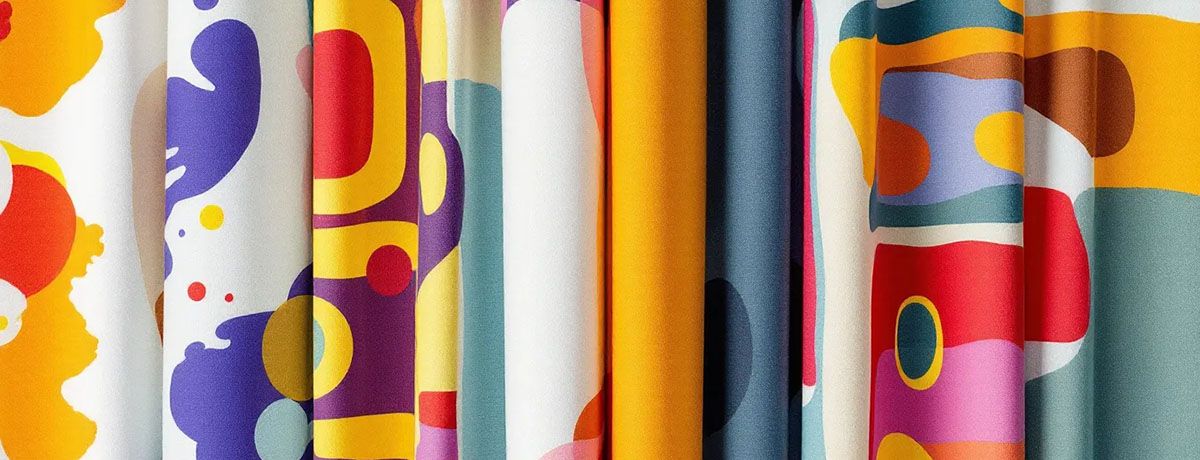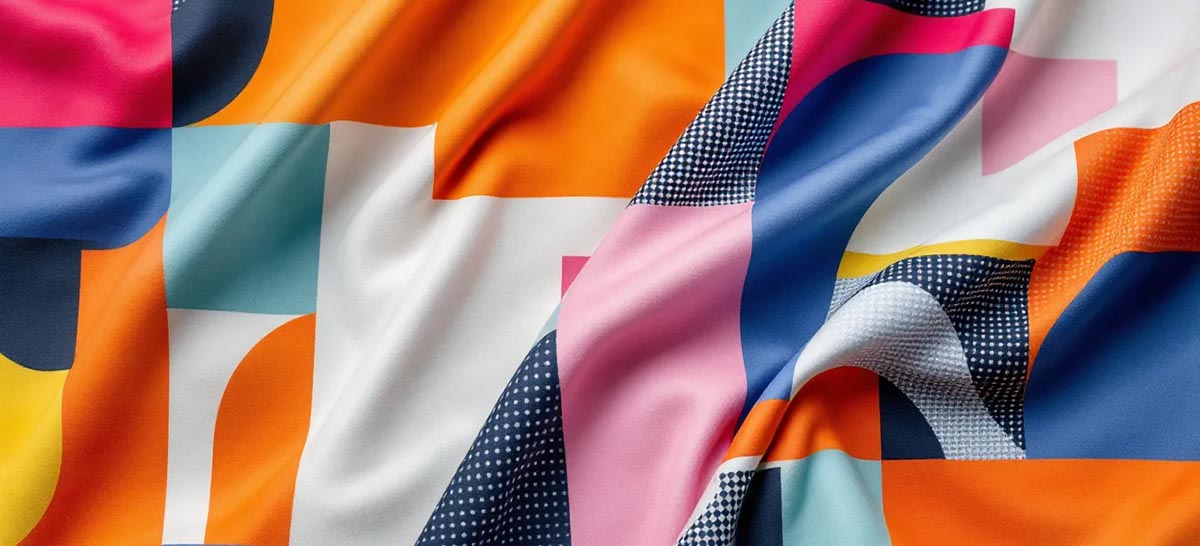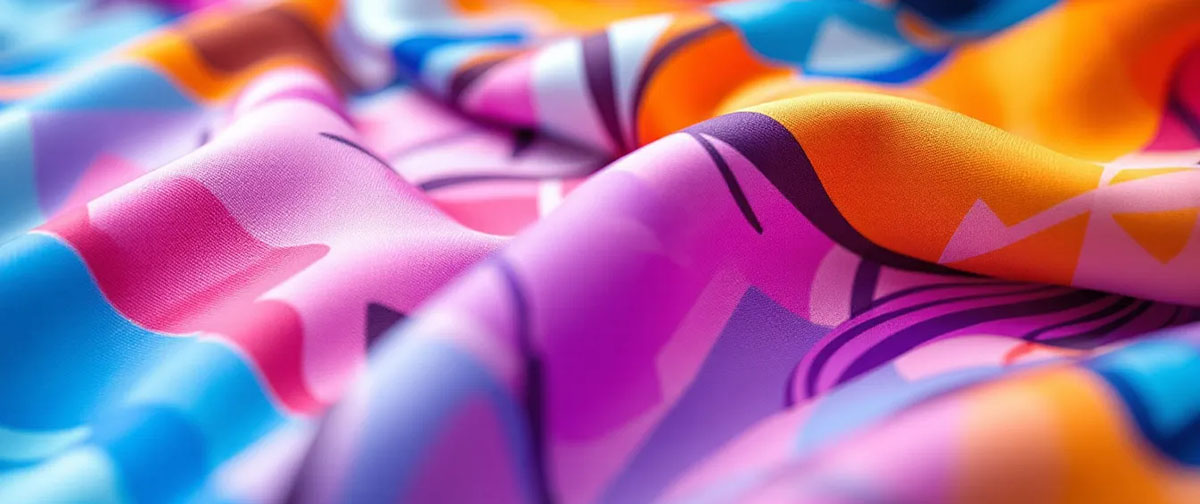Understanding Two Way Print Fabric: Key Differences and Uses

Two way print fabric stretches in one direction and features detailed prints, ideal for garments needing moderate flexibility. Learn what it is, its uses, and how it stands against other stretch fabrics in this comprehensive guide.
Key Takeaways
-
Two-way print fabrics stretch in two directions, providing controlled elasticity ideal for garments like dresses and activewear.
-
These fabrics are highly durable and maintain vibrant prints through advanced techniques such as dye sublimation and digital printing.
-
Choosing the right two-way print fabric involves considering project requirements, design continuity, and careful sewing techniques to ensure optimal results.
What is Two Way Print Fabric?

Two-way print fabrics are a type of directional prints fabric distinguished by their ability to stretch along two axes—either horizontally or vertically. This elasticity significantly influences the fit and drape of the final product, making it a favored choice for various applications. Designers assess these fabrics for stretch ability, print design, and specific applications to choose the best fit for their projects. MH is a renowned supplier of two-way print fabrics, offering options that combine elasticity with colorful printed patterns.
These fabrics balance functionality with visual appeal. Unlike four-way stretch fabrics, which can stretch in all directions, two-way stretch fabrics provide controlled flexibility, making them ideal for specific uses where directional stretch is more beneficial.
Whether you’re designing a fitted dress or a stylish pair of velvet pants leggings, two-way print fabrics provide the right mix of comfort, stretch, and aesthetic appeal.
Common Applications
Two-way print fabrics have found their way into a myriad of industries, enhancing both the aesthetic and functional aspects of various products. For example, in the fashion industry, these fabrics are commonly used in garments like dresses, skirts, and casual wear due to their moderate stretch and comfort. Their adaptability also extends to home decor items such as cushion covers and curtains, where their vibrant prints add a touch of elegance and style.
Moreover, two-way stretch fabrics are highly suitable for activewear, swimwear, leggings, and sports uniforms. These fabrics provide the necessary flexibility and support for physical activities while maintaining their shape and color over time. The versatility of two-way print fabrics ensures that they can meet the demands of various sectors, making them a valuable addition to any designer’s toolkit.
Features and Benefits
One of the standout features of two-way print fabrics is their durability. The elasticity of these fabrics ensures excellent recovery after stretching, maintaining their shape and fit over time. This durability is crucial for garments that undergo frequent wear and washing. Additionally, the soft texture of two-way print fabrics makes them comfortable to wear, making them a preferred choice for clothing that sits close to the skin.
The vibrant and intricate designs possible with two-way print fabrics are another significant benefit. Techniques like dye sublimation and digital printing are commonly used to infuse vivid colors directly into the fibers, resulting in stunning prints that do not add any rigid texture to the fabric.
These methods ensure that the prints remain vibrant even after multiple washes, making these fabrics not only beautiful but also practical. Customizable designs further enhance their versatility, allowing for unique, personalized creations.
How Two Way Print Fabrics Are Made

Understanding how two-way print fabrics are made can provide valuable insights into their unique properties and applications. These fabrics are typically made from synthetic materials like spandex or polyester, which are known for their elasticity and flexibility. The use of these materials enhances the performance characteristics of the fabric, allowing for better stretch recovery and comfort.
The manufacturing process involves several stages, starting with the selection of the right materials and proceeding through various weaving and printing techniques. The combination of these elements results in a fabric that is both functional and aesthetically pleasing, ideal for a wide range of textiles applications.
Weave Pattern and Construction
The construction of two-way print fabrics typically involves a combination of warp and weft threads, which enhance both flexibility and strength. Common weave patterns for these fabrics include jersey and interlock, which facilitate stretch along two axes. These patterns are essential for ensuring that the fabric can stretch either horizontally or vertically, providing the necessary elasticity for various applications.
Knits and twills are also popular weave patterns for two-way stretch fabrics, offering enhanced durability and stretch. The choice of weave pattern can significantly impact the fabric’s performance, making it crucial for designers to select the right pattern based on the intended use of the fabric.
Whether it’s for fashion or sportswear, the construction and weave pattern play a vital role in the fabric’s overall practicality and functionality.
Printing Techniques
Printing techniques play a crucial role in the appeal of two-way print fabrics. Methods like dye sublimation and digital printing are often employed to create vibrant, detailed designs. Dye sublimation, in particular, allows colors to be infused directly into polyester fibers, resulting in prints that remain vibrant even after multiple washes. This technique ensures that the fabric maintains its aesthetic appeal while offering practical benefits like quick-drying properties.
The visual interest created by these colorful and intricate prints enhances the appeal of garments in various applications, from activewear to casual dresses. The ability to maintain vibrant colors and intricate designs even after frequent use makes two-way print fabrics a popular choice among designers and manufacturers alike.
Choosing the Right Two Way Print Fabric for Your Project
Selecting the right fabric for your project involves several considerations. Designers should evaluate project requirements, intended aesthetic, pattern continuity, and efficient material usage to choose between directional and non-directional fabrics. Non-directional fabrics offer practical advantages in cutting and material utilization, making them beneficial for many projects. However, the unique properties of two-way print fabrics make them an excellent choice for specific applications.
Understanding the stretch percentage of the fabric is also crucial. This can be calculated by measuring the percentage increase in the length of the fabric after stretching. These factors help designers choose fabrics that meet both functional and aesthetic needs.
Tips for Sewing with Two Way Print Fabrics
Sewing with two-way print fabrics requires careful planning and execution. Successful sew involves:
-
Strategies for cutting that minimize distortion and enhance pattern alignment.
-
Aligning the print pattern carefully during cutting to minimize fabric waste.
-
Ensuring design consistency through proper alignment.
Keeping the fabric’s grainline ensures the desired fit and finish.
Care and Maintenance
Proper care extends the life of two-way print fabrics and keeps prints vibrant. Washing these fabrics in cold water helps prevent color fading and maintains the integrity of the print. Additionally, washing garments inside out can further protect the prints from wear and tear during the washing process.
Using gentle detergents and avoiding harsh chemicals are also recommended to preserve the fabric’s elasticity and vibrant colors. By following these care directions, you can ensure that your two-way print fabrics remain in excellent condition, providing lasting beauty and functionality.
Why Buy Two Way Print Fabrics in Bulk from MH
Purchasing two-way print fabrics in bulk from MH offers several advantages:
-
MH is positioned as a one-stop wholesale source for these fabrics, providing a wide range of options to meet various needs.
-
Buying in bulk ensures a consistent supply of high-quality fabrics.
-
It offers cost savings for businesses.
-
It provides convenience for businesses.
MH’s commitment to quality and reliability makes it an ideal partner for businesses looking to expand their operations. MH’s strong reputation for consistent quality makes it a trusted industry supplier, often referred to as a leader in the field.
MH as a Long-Term Wholesale Partner
MH has established itself as a reliable long-term wholesale partner for the sportswear and fashion sectors. Their consistent product quality ensures that clients receive reliable materials for their manufacturing needs. This reliability is supported by a robust supply chain, ensuring businesses have consistent access to high-quality fabrics without interruptions.
As an exclusive wholesale supplier, MH supports businesses by providing tailored solutions for bulk fabric orders. This focus on wholesale operations allows MH to cater to the specific needs of international B2B clients, making them a preferred choice for businesses looking to scale their operations.
How to Perform a Stretch Test
A stretch test is essential to determine if the fabric meets requirements. Start by measuring a 5-inch section to establish the baseline length, crucial for accurate assessment.
Pull one end of the fabric while securing the opposite end and note the new length when resistance occurs. This helps understand the fabric’s elasticity and suitability for different uses.
Analyzing these results ensures the fabric performs as expected in the final product.
Measuring Stretch Percentage
To measure stretch percentage, determine the original length of a 5-inch fabric section and note its extension. Divide the extension by the original length, then multiply by 100.
This measurement ensures two-way print fabrics meet specific application unit requirements.
Comparing Two Way Print Fabrics to Other Stretch Fabrics
Two-way print fabrics and four-way stretch fabrics each have their unique advantages and applications. Two-way print fabrics can stretch in one direction, either horizontally or vertical, providing moderate flexibility suitable for specific uses. Examples of these applications can be found in various industries. Repeat examples of these applications can be found in various industries.
On the other hand, four-way stretch fabrics can stretch in both directions, offering greater versatility and range of motion, making them ideal for activewear applications. Understanding these differences helps designers choose the right fabric for their projects.
While two-way print fabrics offer specific advantages for certain styles, four-way stretch fabrics provide greater flexibility and movement for a more active world of applications.
Key Differences
Two-way stretch fabric is defined by its capability to stretch in only one direction, providing specific applications in various industries. This characteristic makes them suitable for garments that require moderate flexibility, such as dresses and skirts. Mechanical stretch, a feature of two-way stretch fabrics, allows them to expand only in one direction due to their specific weave or knit pattern.
Similarly, four-way stretch fabrics offer more flexibility as they can stretch in both directions. This makes them a preferred choice for activewear and garments that require a higher range of motion. Understanding these differences helps in selecting the right fabric for the desired application.
Pros and Cons
Using two-way stretch fabrics can limit the range of motion compared to four-way stretch fabrics, which provide greater flexibility for more active movements. Directional fabrics like two-way print fabrics require careful cutting to achieve pattern continuity and alignment, which can lead to higher material wastage. However, the distinct advantages they offer in terms of controlled flexibility and vibrant prints make them an excellent choice for specific applications.
Despite these limitations, two-way print fabrics remain a preferred choice in various sectors due to their unique properties. Designers can balance the pros and cons to make informed decisions that best suit their project needs.
Summary
Two-way print fabrics offer a unique blend of elasticity, durability, and vibrant prints, making them a versatile choice for various applications. From fashion to home decor and activewear, these fabrics meet the aesthetic and functional demands of different industries. Understanding their features, benefits, and manufacturing processes can help designers make informed choices, ensuring the success of their projects.
By partnering with a reliable supplier like MH, businesses can access high-quality two-way print fabrics in bulk, providing the consistency and reliability needed to scale their operations. With proper care and maintenance, these fabrics can offer lasting beauty and functionality, making them a valuable addition to any designer’s toolkit.
Frequently Asked Questions
What are the common uses for two-way print fabrics?
Two-way print fabrics are widely utilized in activewear, swimwear, leggings, dresses, dancewear, and sports uniforms. This versatility makes them ideal for various clothing applications, catering to both functionality and style.
How do you measure the stretch percentage of two-way print fabrics?
To accurately measure the stretch percentage of two-way print fabrics, stretch a 5-inch section of the fabric, observe the increase in length, and divide this value by the original length. Finally, multiply the result by 100 to obtain the stretch percentage.
What makes MH a reliable supplier for two-way print fabrics?
MH is a reliable supplier for two-way print fabrics due to its consistent product quality and dependable supply chain, which are essential for the sportswear and fashion industries. This reliability positions MH as a preferred partner for businesses in need of high-quality fabrics.
What care instructions should be followed to maintain the quality of two-way print fabrics?
To maintain the quality of two-way print fabrics, it is essential to wash them in cold water, turn the garments inside out, and use gentle detergents. Following these care instructions will help preserve the vibrancy and integrity of the prints.
What are the benefits of buying two-way print fabrics in bulk?
Buying two-way print fabrics in bulk offers significant cost savings and a reliable supply of high-quality materials, enhancing convenience for businesses. This approach allows for better inventory management and reduced per-unit costs.


